It’s the end of 2023, if you’ve attempted to buy a safe box in Lebanon in recent years, it’s likely that you’ve felt overwhelmed.
Since 2019, the Lebanese have had the chance to stumble on safes sold in supermarkets, local tools shops, stationery suppliers, furniture suppliers, and in even more ridiculous places. If you understood the intricacies of buying such an item, you would have found such practices outrageous. You would have been appalled.
What happened?
- The obvious increase in demand led to the proliferation of random inexperienced suppliers
- The Lebanese need for safes was restricted to the banking or security industry (and some high-end residentials); not anymore.
Understanding the Increase in Demand
for Safe box in Lebanon
Lebanon has seen a lot of market changes since 2019. Following the economic crisis, corporate operations and financial institutions have dramatically changed practices. Two main factors have directly influenced the surge in demand for safe box – Lebanon:
- A monumental increase in cash transactions
- An escalation in crime rate
Below, we have broken down the two factors that provoked the Lebanese market to display a colossal increase in demand for safe box in Lebanon:
Learn more – Consult a ZOD Safes Expert:
You might also be interested in:
1- Dealing with Lebanon’s Financial Shift: From Banks to Cash
Buying a safe box in Lebanon is no longer a luxury, now it has become a necessity. Following the economic crisis, and more specifically, the banking crisis, the Lebanese have lost faith in the banking system. Hence, the economy has shifted practices to minimize the banking involvement in daily transactions, which in turn led to the prevalence of cash.
It is common knowledge, that the Lebanese have been forced to keep their money out of their deposit accounts – but where should they deposit the cash instead? With the high amount of liquidity at hand, there is only one viable solution to protect the cash, a security safe box in Lebanon.
2- The Fall of the Lebanese Currency’s Effect on Security Safes
The economy has crumbled in a blink of an eye. The currency has depreciated quickly, without warning, and is still suffering from a free-fall. In light of the Lebanese parliamentary elections 2022, the depreciation has only intensified. The worse the currency gets, the poorer the population who is indemnified with a salary in Lebanese pounds as per local laws. The Lebanese salaries have been cut by more than 5 folds in a matter of months.
The people who are used to a more luxurious mode of living have had trouble adapting to their fall in social standing. With the basic necessities sometime unavailable, we have seen a surge in crime rates.
With the increase in theft and burglary, owning a safe box in Lebanon has become mandatory and an indispensable item for every corporation and household.
Lack of Knowledge About Safe Boxes
A safe box purchase may be a difficult decision to make, especially with the variety of options available on the market. Each safe has its own features and characteristics, and not all safes are created equal.
The problem is that many traders with no expertise in security have jumped at the chance of benefiting from the increase in market demand for safe box in Lebanon. The market is now flooded with unqualified safes. The suppliers are clueless about their own ignorance and do not understand the difference between the safes. To make matters worse, the clients are now average people with no experience in the matter of safety or security.
With inexperienced clients, and incompetent suppliers, the safes being sold and bought hardly offer any security at all. Often offering nothing more than psychological comfort.
To understand more what we are referring to, we have compiled certain misconceptions and mistakes the Lebanese are facing when buying a safe box in Lebanon. Here’s what you need to know.
Mistake #1 : Assessing a Safe Box based on its Weight
In the past – decades ago, that is, safe boxes were sold based on their weight. The market believed that in order to assess the quality and theft resistance of a safe box it needed to consider first, and foremost, the weight of the safe. The heavier the safe, the more resistant to theft they thought it was.
This theory is inaccurate to a great extent. The steel itself can be thinner and lighter, and yet be more resistant, as seen in bulletproof plates. The material is not necessarily stronger if it weighs heavier. Technology and the composition of the material have evolved, and weight has become an erroneous measure. Additional factors to be considered, are the thickness of the wall and door barriers, the bolt work, the lock, the drawer slides, the handle, base fixing strength, the safety mechanisms implemented, and the overall cohesion of the product.
In addition, nowadays, there are many ways to strengthen the safes and increase their burglary resistance, none of which is associated with their actual weight. Regardless of the security technique or mode used by the supplier, the only real measure of safety is how long a safe box can last when being subjected to a theft using certain tools; that is to say, we need to consider the type and the efficiency of the tools used, as well as the full length of the procedure to break into the safe box.
Mistake #2 : Using a Residential Safe to Store Cash
Safes aimed for home use, are not traditionally intended to hold cash. They can hold passports, documents, low-value jewelry, a camera, or such mundane items. Corporate safes, on the other hand, can withstand cash. They are secure enough to do so.
When a safe is considered a residential safe, its main security is limited to withstanding the intrusion of an inexperienced thief, trying to break into the safe using hand tools.
Hand tools examples can be: hand saws, wedges, 1.5 kg hammers, chisels, a small row bar, a bolt cropper, punches, screwdrivers, and cordless low-power drills.
That’s it. Nothing more.
If you intend to keep cash in the safe, as most of us in Lebanon now do, we need to be aware of the difference. Our safes need to be equivalent to corporate safes to provide enough security.
Mistake #3: Thinking All Certified Safes Are Safe for Cash
Choosing the right certificate
Not all safes are the same, even certified ones. EN14450 Secure Cabinets are not secure safes. Although to the untrained and inexperienced client, it may seem as though they are purchasing a certified safe. In fact, Lebanese suppliers might even claim so.
What you need to know is that such safes don’t offer protection nearly enough to store cash, as opposed to EN1143-1 certified safes.
Safe Cabinets VS Real Safes
The EN11450 is a “Secure Safe Cabinet” standard and was never intended as a standard for a cash holding unit. It was initially introduced in Europe to be used for safe storage of general items in the house such as cameras or passports, but to state that it holds cash may be misleading. The tools used in testing EN14450 are simple hand tools, such as a 1.5kg hammer, hand saws, screwdriver, and cordless drill (approx. 500 W) attaining a low grade of S1 and S2 only.
The CEN263 voted to remove the word “safe” from the name of the EN14450 standard, stating that it was misused in efforts to market the product. Most countries in Europe don’t offer any cover regarding these units in a commercial setting or would offer a low rate of cover. Therefore, these secure cabinets should not be classified as safes.
On the other hand, EN1143-1 European standard qualifies for a trusted safe deposit. It is accredited according to ISO/IEC 17025 testing and calibration laboratories. All safes certified under EN1143-1 were tested as they were manufactured, and were certified immediately after the test completion.
A Fire Safe Does Not Offer Security Against Theft
A fire safe is generally way cheaper than a secure safe. Hence, many suppliers, by ignorance, or by treachery, will try to sell you fireproof safes instead. Beware the difference.
A fire safe is not a secure safe. It is easily broken into. The only safety it actually provides is against fire. If it is not explicitly stated that it is a burglar safe, you should know that it is not.
Mistake #4: Buying a Fire Safe Instead of a Secure Safe
While safes can be, at once, fireproof and anti-theft, it is not always the case, and the high-graded secure safes are rarely so.
How are safes fire tests performed?
Fireproof certificates are awarded according to the duration of fire protection a fire safe can provide the given content. This is because the temperature at which each item deteriorates differs. For example, digital media (at 50°C) whereas documents (at 170°C). Special tests are performed to grade the resistance of the safe box, the fire test encompasses a drop test where the safe deposit is thrown from a height relative to a third floor to ensure the safety of the valuables inside the safe box if needed to be tossed from a building.
In case of fire, Beware
Even after the fire has died down, the heat around the case may damage the belongings if not opened immediately. Therefore, a “cooling period” is required to ensure the safety of the valuables inside the safe box even if not opened instantly. Thus, the ultimate protection of belongings is maintained by proper testing.
Mistake #5: Not Understanding Safe Box Grades
Some suppliers claim that safes are “built according to regulations” (construction characteristics) – these safes have not been tested and are not certified.
For a safe box to be certified EN1143-1 status, it undergoes several tests, the tools range from the lightest “hand assembling tools” i.e. wrenches, screwdrivers… to more elaborate tools such as electric and thermal cutting tools, electric disc cutters, diamond core drill, and gas cutting and welding.
Each tool category has a specific value measured per minute, in addition, a basic value for each type of tool. The result is described in resistance units, RU.
The more elaborate the tool, the higher the basic value. The basic RU ranges from 0 for a screwdriver up to 300 basic RU for a diamond core drill. The RU per minute ranges from 5 RU to 35 RU subject to the tool being used.
Types of Safe Tests
There are two kinds of tests related to tool attacks. Partial access, where a hand hole is made of 112mm square dimensions or 125mm in diameter. Complete access, where a square of 315mm dimensions or a 350mm diameter is made through the safe box.
The outcome for a safe box is set in resistance Grades, ranging from 0 to X. The highest on the market is VI, while for strongroom vault doors it ranges from 0 to XIII, for archives from Grade III up to Grade X. Between each Grade, the result is given with an increase of 50%, for strongroom vault doors: Grade V =270 Resistance Units and Grade VI = 400 Resistance Units.
Mistake #6: Not Understanding Your Safe’s Features
While the technique and mechanisms used to protect and secure a safe are not an indication of the actual level of security the safe offers. It is important to understand what you are actually being offered. Here are some safe box characteristics you may need to know:
What is spring security?
Spring security is an access-control re-locking mechanism, whereby any attempts of interference with the safe trigger this feature.
What is glass security?
Glass- security is incorporated in a device that auto-locks upon intrusion with tempered glass.
Why do spring security and glass security matter?
The most common method for breaking into a safe box is by making a hole that grants the intruder partial access, about 1 square decimeter for a hand to enter and release the lock which is located at the inside of the door. If a thief could disconnect the locks then he can open the door. Therefore, it is tested by this method. This is prevented by a glass plate inside the door over the lock area (1 or 2 locks) which includes wires connected to the end of the bolt work, on the top and bottom. Thus, when partial access is performed, the glass would disintegrate and the spring will go into a blocking position and block the door.
Other safe box features:
- Patented handle mechanism: in case of a theft attempt, the patented handle mechanism provides extra protection for the locking system.
- Security lock: whether mechanical or electronic, it should meet international security standards. Additional features to consider, are anti-vibration and anti-pry.
- Anti-vibration: provides protection against vibration
- Anti-pry: it limits prying by concealing the door edge from intrusion and restricting access to the inside of the safe box.
- Override option: this feature permits the owner immediate access in case the passcode is forgotten or batteries die out.
- Fire seal: it lengthens in size to offer additional safety in case of a fire attack.
Mistake #7: Not considering the Lock
Safes can come with different locking mechanisms. Most often, they are provided with combination locks: a regular key lock coupled with either a digital or a mechanical coding mechanism.
Should you buy a mechanical or a digital safe?
This matter is completely a question of preference. Each type of mechanism offers a different type of operation. However, this question does not necessarily influence the security level of the safe.
Choose a digital lock if you want the ease of use, to operate in the dark, and to reach your valuables fast. If speed is what you are looking for, an electronic lock is more user-friendly and can provide more speed. To open a mechanical lock you will have to turn the dial, over and over again until you input the entire code. This process can be tiresome, and you can be prone to mistakes if you are in a rush. A digital lock is more practical if you ever need to open the safe in the dark. Battery-powered keypads can light up and you will not need the assistance of a flashlight to open your safe.
Choose a mechanical lock, if you are concerned with reliability and long-term trouble-free operation. If you are looking for a long life span, a mechanical lock might be ideal. Mechanical locks have been tried and tested. They rarely if ever require any maintenance. Moreover, they do not consume any batteries or other consumables. Thus, you would never be troubled in this aspect.
How to classify locks that secure safe boxes?
In order to rank locks using the EN-1300 standards, the following characteristics are tested in independent laboratories, and certificates are accordingly handed. Most importantly:
- Destructive burglary resistance: the lock is tested against different tools, as well as drop tests, temperature endurance tests, and vibration tests to ensure that the safe can tolerate different environmental factors. Electronic locks are tested to withstand power failures, electrostatic discharge, variations in power supply voltage, power surges, and other electromagnetic anomalies.
- Uniqueness of key/code: ensuring that only one code can open the safe box, so tests are made to determine if any false codes can open the lock, or trying a key that is slightly different from the original one.
- Resistance to manipulation: it is tested by manipulating the lock to open.
Locks are classified according to their performance and the security provided. It ranges from Class A to Class D, from least to highest respectively.
The European Standard for safes also defines how much and to which classification safe locks must comply. Depending on the grade of the security safe, manufacturers have to use 1 or 2 locks that comply with EN 1300 (European Standardization for safe locks).
The required quantity of locks in graded safe boxes is as follows:
- 1 lock from Grade 0 to III
- 2 locks from Grade IV to X
Noting that the requirement for each grade is based on the class of lock:
- Class A locks are required for safes with grades 0 to II
- Class B locks are required for safes with grades III to V
- Class C locks are required for safes with grades VI and up
- Class D locks are required for strongroom doors
To understand the points mentioned above, you can refer to the below table which summarizes the requirements of the lock per safes grade:
| Standardization | Lock required according to | Number |
| EN 14450 | EN 1300 | |
| S1 | class A. | 1 |
| S2 | class A. | 1 |
| EN 1143-1 & EN 1143-2 | ||
| Grade 0 | class A. | 1 |
| Grade I. | class A. | 1 |
| Grade II | class A. | 1 |
| Grade III | class B | 1 |
| Grade IV | class B | 2 |
| Grade V. | class B | 2 |
| Grade VI | class C. | 2 |
The minimum number of usable codes per class is the following:
- Class A – minimum 25.000
- Class B – minimum 100.000
- Class C – minimum 1.000.000
The EN 1300 is approved by the European Committee for Standardization and validated in every EU member state. It encompasses all kinds of locks, which have been tested in various methods to confirm their reliability. It follows severe demands, such as battery-powered locks must at least complete 3000 lock openings on a single charge.
The ISRG suggests a certified digital safe lock, meeting European Standard EN 1300 over a mechanical key lock since a mechanical key can be easily copied and leave no trace of access. Whereas, the digital lock has a feature of shutting the lock for 10 minutes if several false codes were entered in a row.
Installing the Safe
It is essential to secure the safe in place. This can be done either by fixing the safe to a solid surface, usually the concrete wall or the hard floor. This choice may depend on the design of the chosen safe, as most will only have pre-drilled holes in one location, either the back or the bottom. These are there to prepare for your installation. Good safes are usually very heavy, and often quite big in size. They are not easy to maneuver and often require an expert team to accomplish the job.
This process requires professional tools such as:
- Socket set or Screwdriver
- Hammer
- Anchor Bolts
- Drill
- Saw
Where should you buy your safe box?
Zod security is a pioneer safe box supplier in Lebanon. With more than 45 years of experience in selling and servicing security safes. As an expert, Zod is capable to provide you with sound council and properly assist you in buying your safe.
To learn more contact Zod below.
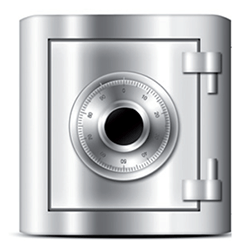
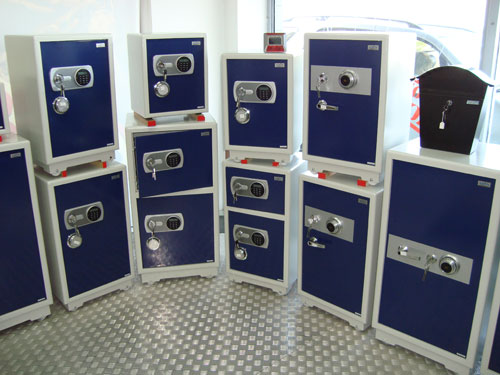
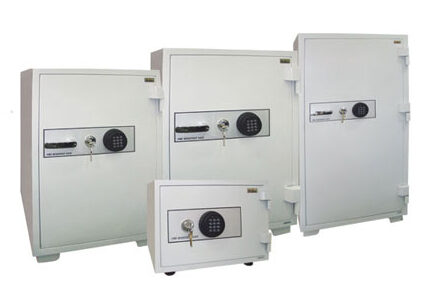
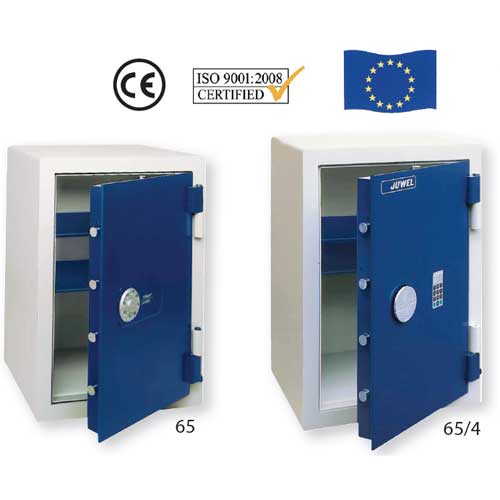
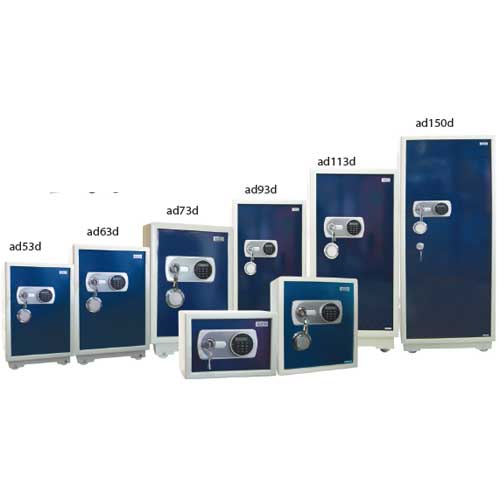
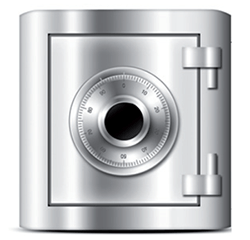

0 Comments